Guide to River Bass Fishing: 4 Areas to Find Bass & How to Catch More [Pro Tips]
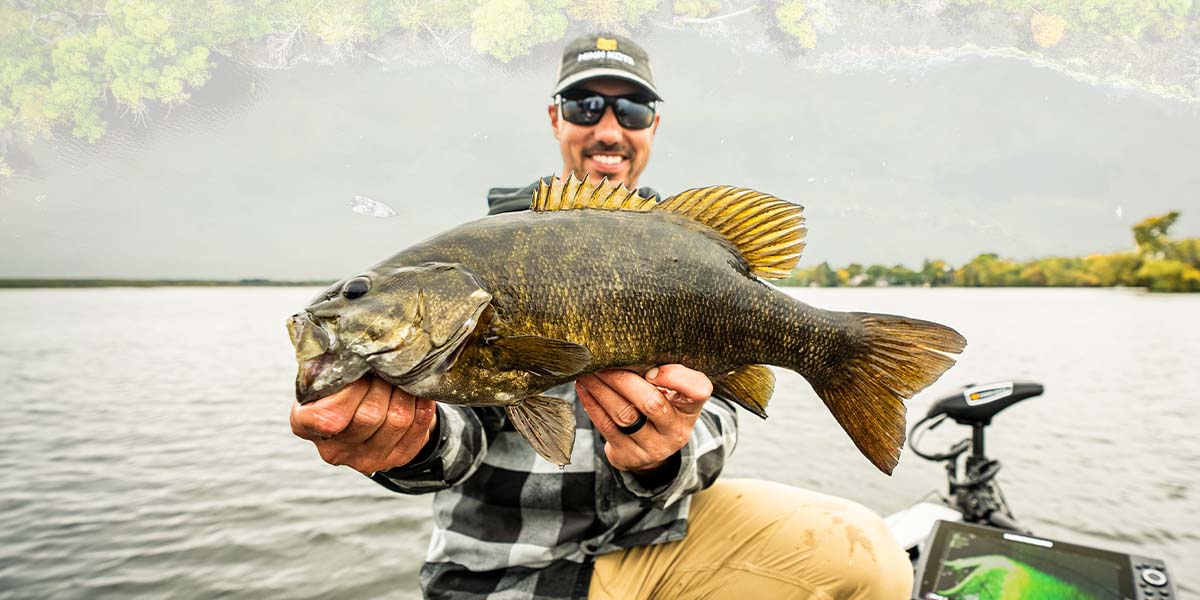
When it comes to bass fishing in rivers, especially in expansive river systems like the Mississippi, locating high-percentage areas can make or break your day on the water. Whether you’re fishing in late summer, fall, or any other time of the year, these tools will help you pinpoint productive areas and make your time on the water more enjoyable and efficient.
In this article, we will walk you through a guide to river bass fishing with insight from Bassmaster Elite Series and river fishing expert Bob Downey. Downey will break down some of his best river bass fishing tips and helpful insights on how he utilizes his Humminbird electronics to speed up the search to give you a significant advantage in finding and catching more river smallmouth and largemouth bass.
Top 4 Areas to Find Bass in River Systems
Fishing in river systems requires a keen understanding of where bass are likely to congregate. Bob Downey is going to show you four high-percentage areas to focus on when targeting bass in rivers.
1. Bass Spawning Grounds
The first place Downey recommends checking on any river system is the spawning areas. Using high-definition contour maps and satellite imagery on a Humminbird LakeMaster Premium mapping card, identify regions with little to no current, such as dead-end cuts or backwaters. Ideally, these areas are still near the main river channel and current areas where fish transition to and from the spawn. These spots are ideal for both largemouth and smallmouth bass to spawn.
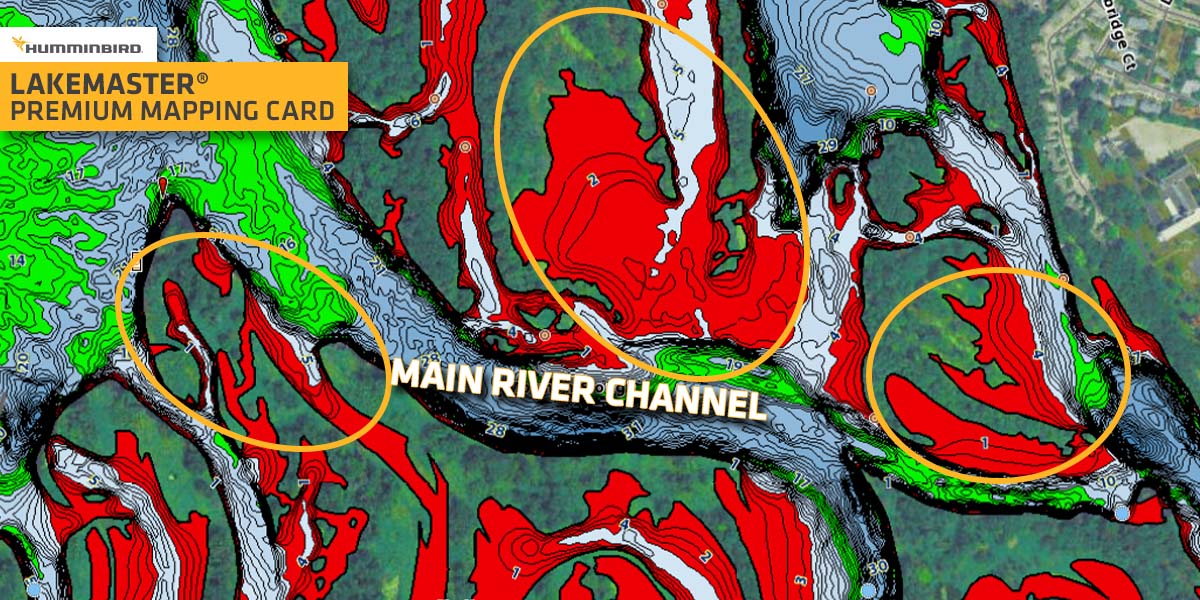
While slack water spawning grounds are critical in the springtime around the spawn, don’t limit yourself to just springtime; these areas are often home to large populations of bass year-round as the fish tend to stay close to their spawning grounds, making them prime locations throughout the year.
A quick comment on current: largemouth tend to prefer less current, and smallmouth tends to thrive around it, but we’ll explain more about that in a second.
If you’re fishing a river system with fewer backwaters, look for islands and back channels. These spots provide current breaks and safe spawning grounds, especially on the backside of islands where the current is less intense.
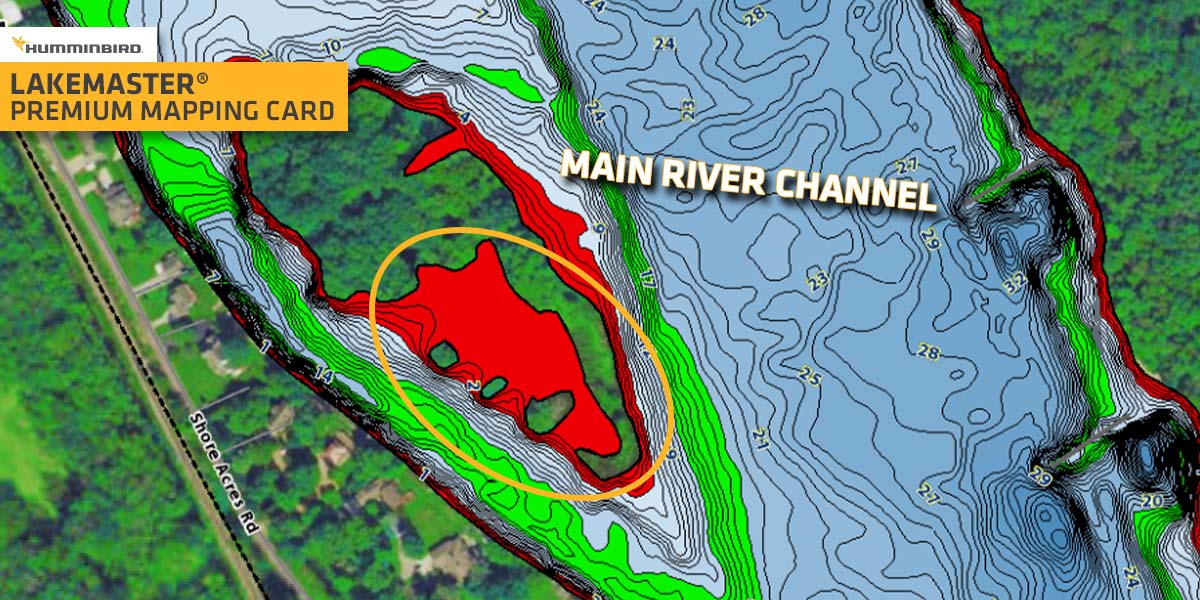
Even in rivers with no large backwater areas, these smaller islands and channels can hold substantial populations of bass that are looking to feed and/or spawn, making them essential areas to target in both spring and summer.
2. Areas with Clean Water
Finding clean water in a river system can be challenging, especially after heavy rains. However, these clean ecosystems typically support the most abundant life, including quality bass.
Often, the spawning grounds and backwater areas off the main channel, like we just talked about, would be a good place to check for clean water. Use your Humminbird LakeMaster maps to identify potential clean water areas, like backwaters with less current.
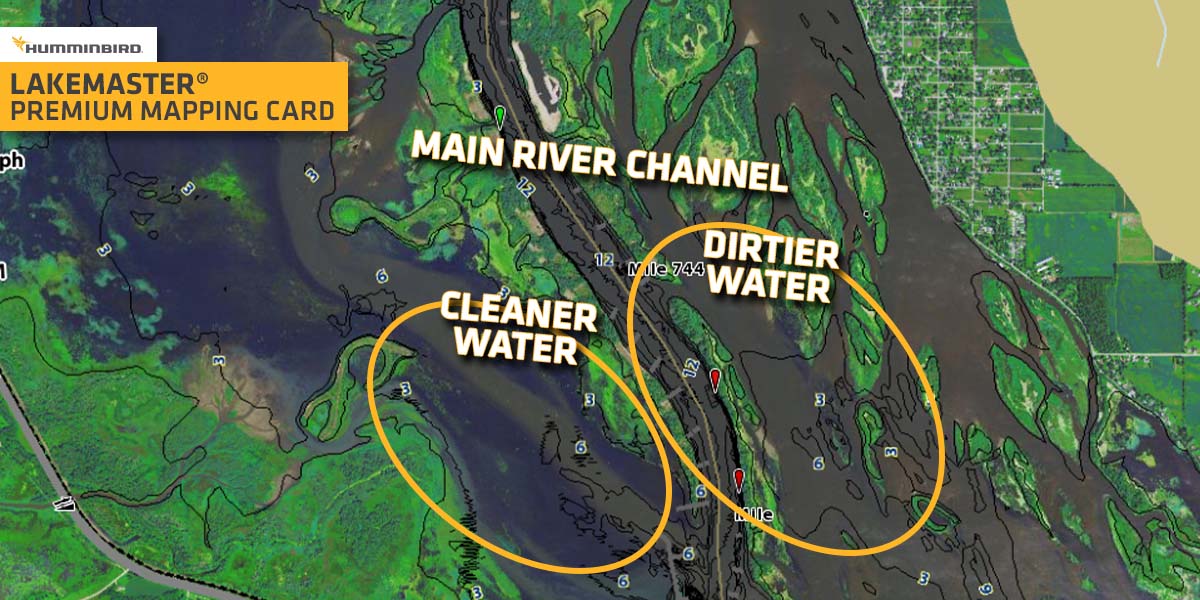
Aerial imagery can also help verify which areas remain clear during muddy conditions, guiding you to the most productive spots. Once you’ve identified a few areas that may contain cleaner water, go visit those areas to confirm.
Look for feeder creeks that feed into the main river channel. You will often find dirtier water below these feeder creeks as runoff from those creeks will dirty up the water and flow down river—so check above those feeder creeks.
3. Presence of Current
While it might seem obvious, the presence of current is crucial for river bass. Smallmouth bass thrive in heavier currents, often found in outside bends or where secondary channels meet the main river.
Current creates feeding opportunities for the bass to forage on baitfish that sweep down current, past timber, over sand drops, or other ambush points, providing an easy meal for the bass. Remember how we talked about slackwater areas near islands earlier? Well, you will also want to target the areas around that slack water where a main river or a secondary river channel meets, creating a key feeding zone—especially for smallmouth.
Largemouth bass, on the other hand, may prefer areas with slight flow, such as backwaters with minimal current. This subtle flow keeps the water oxygenated and attracts baitfish, which, in turn, attracts bass. Current is a critical player when the fish are no longer spawning and are looking to gorge on bait.
4. Find the Bait!
Finding bait is critical no matter where you fish, so it’s no different in a river. Smallmouth tend to be your shad or minnow eaters, which makes sense to why you’re going to find them more often near current where bait can be abundant. Largemouth tend to be your frog, crayfish, and bluegill eaters.
So how do you find the bait? Use your electronics, your eyes and your ears. Humminbird electronics can be key (which we’ll talk about next) in the main river channels, but also use your eyes to locate schools of glimmering bait fish in the water and listen for bluegill popping on the bottom of lily pads or on matted grass.
How to Use Your Fishing Electronics in River Systems
Tips for Finding Bass in Rivers with Your Electronics
River systems are some of the most challenging yet rewarding environments for anglers. With constantly changing water levels, currents, and bottom structures, rivers demand a keen understanding of the environment and the ability to adapt quickly. Humminbird electronics provide the tools you need to unlock the secrets of river fishing and turn those challenges into opportunities.
Now that you’ve identified the key areas to target, let’s talk about how to put your electronics to use.
LakeMaster Mapping and Aerial Imagery for Locating Key Areas
Before hitting the water, study your LakeMaster contour maps and aerial imagery to get a lay of the land. Identify potential spawning areas, backwaters, and clean water spots.
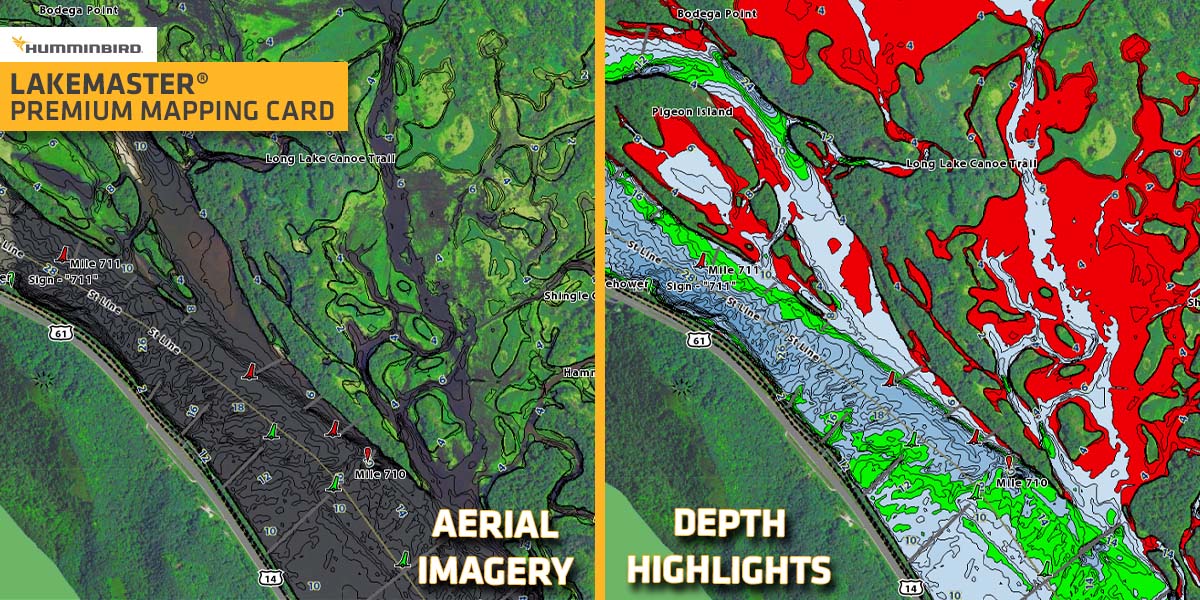
Pairing aerial imagery with traditional contour maps with depth shading (shallow water, specifically) can help you get a lay of the land and clearly identify main river areas from backwaters or other areas mentioned above.
You can even use LakeMaster mapping to locate structural elements like wingdams/jetties and even matted grass or laydowns with aerial imagery.
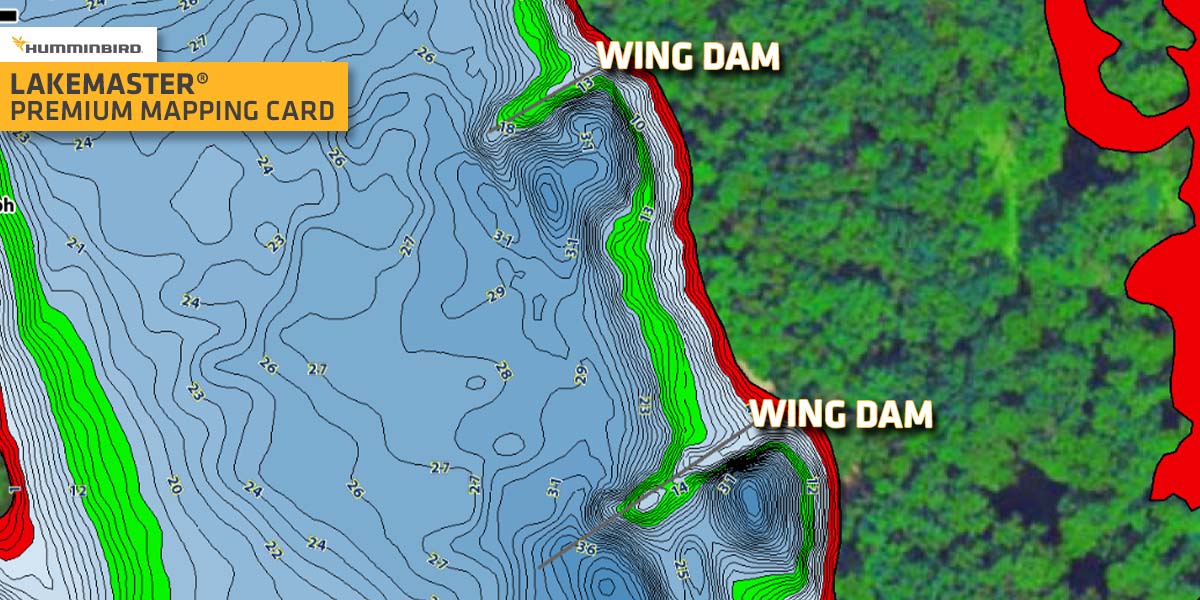
This pre-trip preparation will save you valuable time and help you focus on the most promising areas once you’re on the water. As Downey notes, a good map study can point you to spots where bass are likely to spawn and live throughout the year.
Side Imaging and Down Imaging for Locating Quality Underwater Structure
When on the water, Humminbird’s Side Imaging and Down Imaging allows you to visualize underwater structures with remarkable clarity. Side Imaging provides a wide, detailed view of what's to the left and right of your boat, helping you identify potential fishing spots like schools of baitfish, sand drops, jetties, rock piles, laydowns, and more. In river systems, areas like this are subtle yet critical areas where bass often ambush prey.
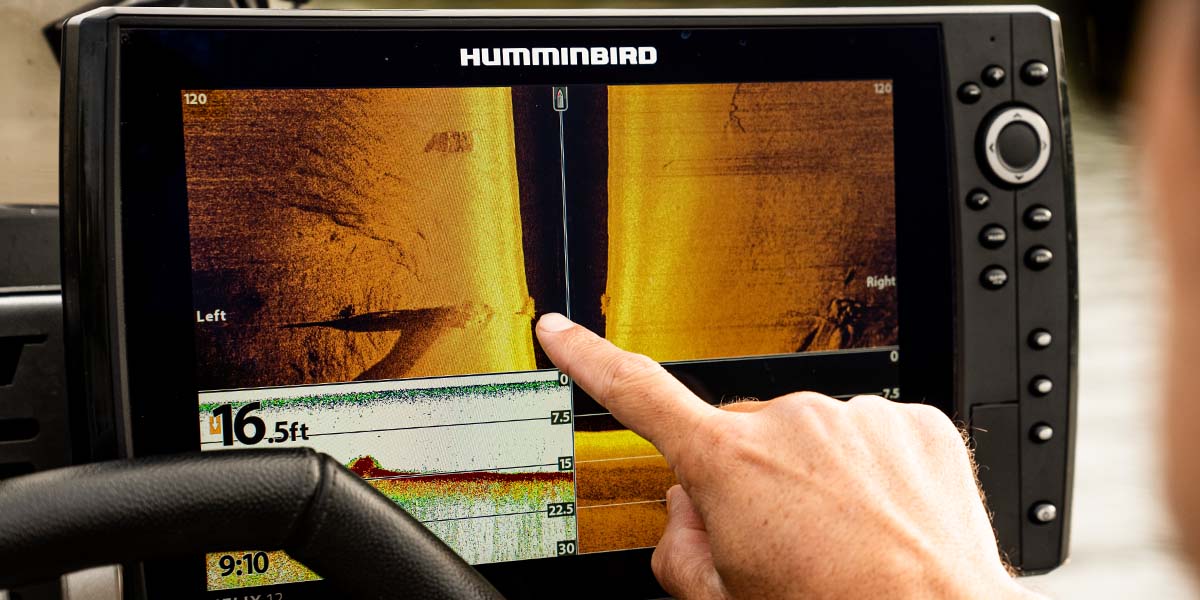
Scan around to find high-percentage ambush points for bass and drop waypoints on them so you know exactly where to start fishing when you’re ready.
MEGA 360 Imaging for Casting to Underwater Structures
One of the most powerful river fishing tools in your arsenal is Humminbird MEGA 360 Imaging. This technology gives you a comprehensive view of the area 360 degrees around your boat, allowing you to quickly see where a weed line or rock pile is.
When fishing a river system, use MEGA 360 Imaging to make precise casts to high-percentage areas or even waypoints that you’ve marked on your Side Imaging. Downey often relies on MEGA 360 to spot fish holding on sand drops, near jetties/wing dams, laydowns, or other structures.
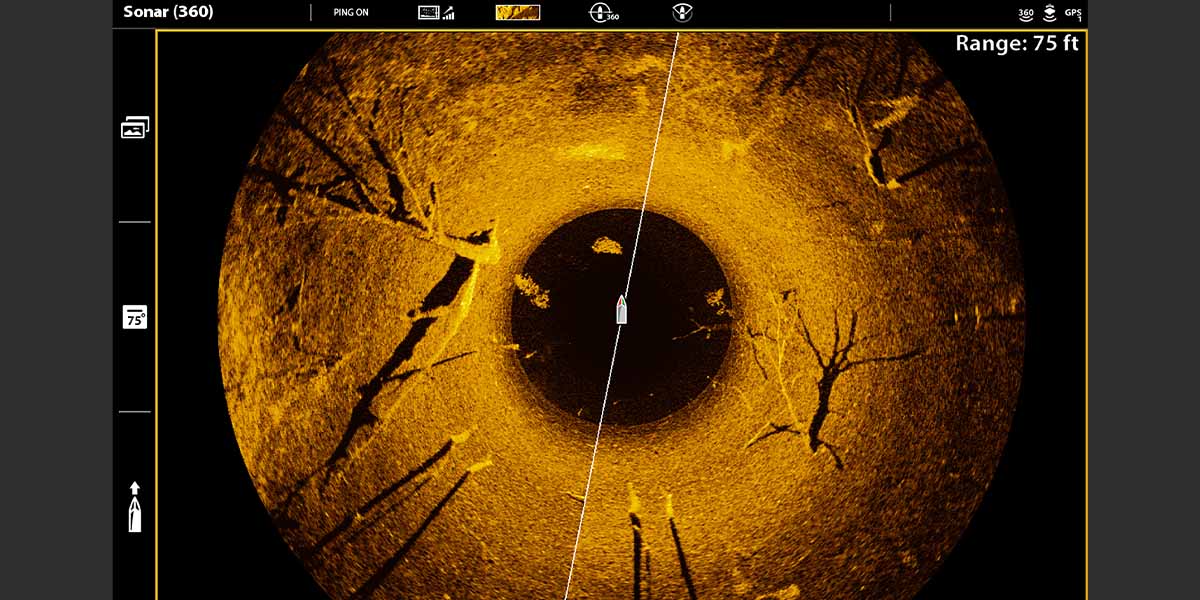
What Types of Lures Should You Use on River Systems
There are tons of options when it comes to lures for river fishing, but as conditions change throughout the day, so should your approach. Downey suggests starting with faster-moving baits like topwaters to locate active fish.
If the bite slows down, switch to subsurface lures like swimbaits, swimjigs or crankbaits, and eventually slow down with more finesse presentations like jigs or worms to maximize your catch.
Conclusion
Fishing river systems like the Mississippi River presents unique challenges, but with the right knowledge and tools, you can consistently find and catch more bass. By focusing on key areas like spawning grounds, clean water ecosystems, and current breaks, and leveraging the full range of Humminbird’s electronics, you’ll be well on your way to a successful day on the water, regardless of the season. Keep these tips in mind, and you’ll be equipped to tackle any river system with confidence.
Key Takeaways:
- Use LakeMaster mapping and aerial imagery to identify prime bass locations before hitting the water.
- Focus on key areas like spawning grounds, islands, clean water ecosystems, and wherever you can find bait.
- Leverage Humminbird’s Side Imaging, Down Imaging, and MEGA 360 Imaging to locate and target bass effectively.
- Adjust your techniques throughout the day based on conditions and bass behavior.






